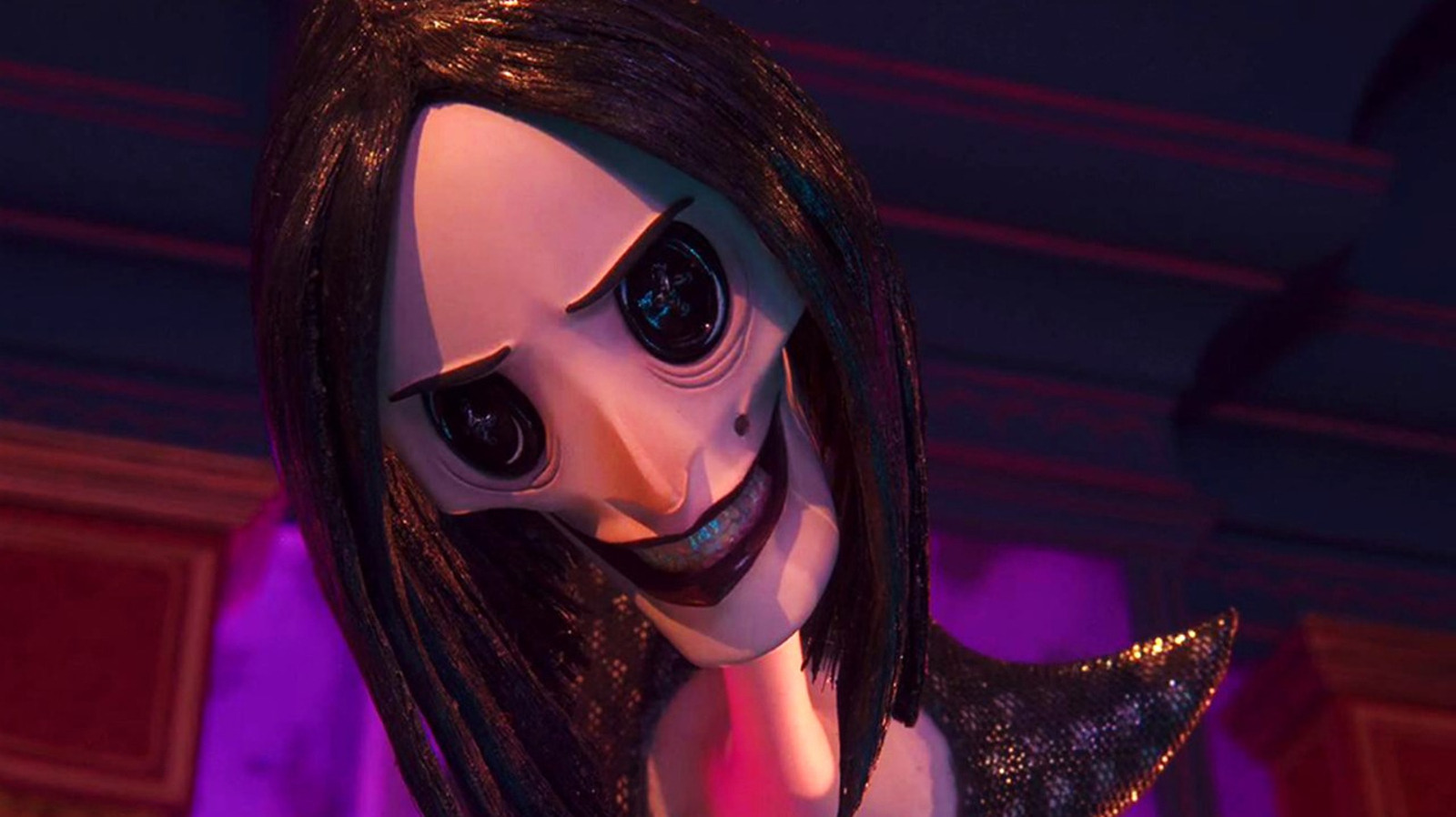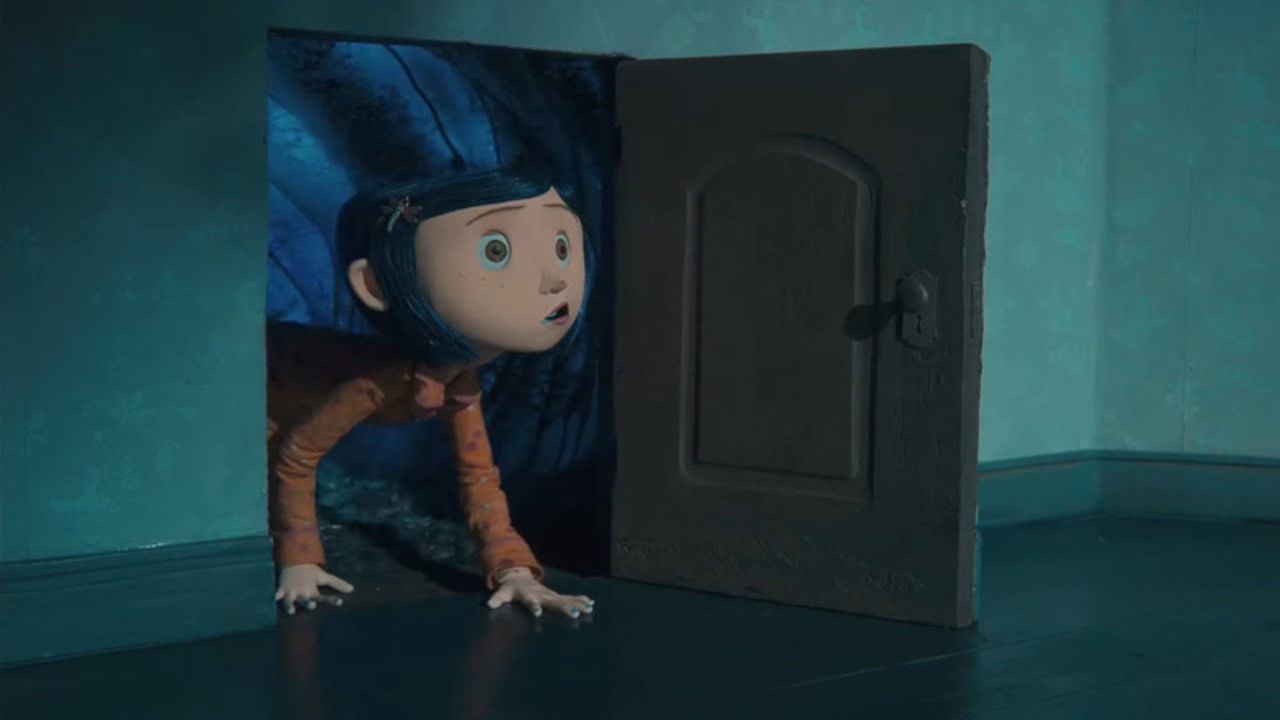Released in 2009, Coraline was a stop-motion animated film adapted from Neil Gaiman’s dark fantasy novel of the same name. Directed by Henry Selick, who was already known for his work on The Nightmare Before Christmas, the film combined his signature style with advanced 3D animation techniques, which had regained popularity in the 2000s.
Coraline stood out for its visually rich environments, detailed character designs, and unique use of color and lighting to create a world that was both enchanting and unsettling. Critics widely praised the movie for its inventive storytelling, meticulous animation, and eerie tone, establishing it as both a critical success and a cult favorite. Its recent re-release reinforced its appeal, proving that the story and style have enduring resonance with audiences of all ages.
The film’s climax revolves around Coraline’s confrontation with the “Other Mother,” a malevolent entity also known as Bedlam. Bedlam kidnaps Coraline’s real parents to force her to remain in the Other World, but Coraline refuses to submit. To secure her parents’ release and free the spirits of the ghost children trapped in that world, Coraline challenges Bedlam to a game: if she retrieves both her parents and the ghost children’s eyes, Bedlam must release them.
Knowing Bedlam is deceitful, Coraline cleverly navigates the Other World, locates her parents inside a snow globe, and races back to reality. With the help of her neighbor Wybie, she ultimately defeats Bedlam’s hand and destroys the key to the Other World by throwing it down a well, ensuring that Bedlam can never return.

Coraline’s Growth, Community Connections, and Playful Audience Engagement Through Story and Credits
The story concludes with Coraline’s family hosting a garden party for their neighbors, symbolizing the restoration of harmony in her life. During the party, Coraline takes time to bring closure to Wybie’s grandmother, explaining the mystery surrounding her missing sister.
This moment demonstrates Coraline’s emotional growth, showing that she has learned empathy and the importance of connecting with those around her. The scene also highlights the film’s underlying message about community and relationships, suggesting that personal fulfillment comes not only from safety at home but also from meaningful interactions with others.
At the end of the movie, the credits included the cryptic phrase “For those in the know: JERK WAD,” which initially puzzled viewers. This was part of an interactive promotion where fans could find the code in the credits and enter it on the Coraline website for a chance to win Coraline-themed Nike Dunks.
This contest reflected marketing strategies before social media became dominant, encouraging viewers to engage with the film beyond the theater experience. The reference also tied into the movie itself, as Coraline affectionately calls her neighbor Wybie a “jerk wad,” adding a playful layer of interactivity for attentive audiences.

Coraline’s Journey Highlights Dangers, Growth, and Community Through Fantastical Adventures and Relationships
Coraline shares several thematic elements with classic fantasy stories, including The Wizard of Oz and Alice in Wonderland. In all three narratives, a young girl is transported to a fantastical world that initially seems to fulfill her desires but quickly reveals hidden dangers. Coraline wishes for a more attentive and interesting life, while Dorothy dreams of escaping the monotony of Kansas.
Both discover that these fantastical worlds contain threats they had not anticipated: Dorothy faces the manipulations of the Wizard and the Wicked Witch, while Coraline confronts Bedlam. These parallels emphasize a recurring theme in fantasy literature: the allure of escape often comes with significant risks, and true resolution comes from understanding and valuing one’s real life.
While the film generally follows Neil Gaiman’s novel, one key difference is the introduction of Wybie Lovat, a character who does not appear in the book. In the movie, Wybie assists Coraline during the final confrontation with Bedlam, serving as a counterbalance to her character and helping to highlight her emotional growth.
In the novel, Coraline completes her mission entirely on her own, emphasizing her independence and self-reliance. By including Wybie, the filmmakers added a relational dynamic that enriches Coraline’s journey, showing how collaboration and trust can complement courage and intelligence, while also providing a sense of connection and companionship that the novel leaves mostly unexplored.
The film’s ending extends the novel’s central theme of appreciating home while adding an emphasis on community and belonging. At the start of the story, Coraline is isolated, pushing people away and feeling neglected by her busy parents. Through her experiences in the Other World, she comes to recognize the value of her real family, flaws and all.
By the conclusion, Coraline also accepts Wybie and the neighboring community as part of her extended family. This development underscores the movie’s broader message: personal growth involves not only understanding the importance of home but also learning to build relationships, trust others, and find one’s place in a supportive environment.



